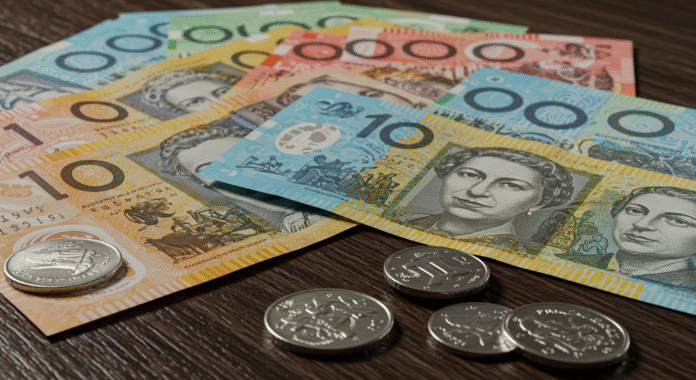An Australian dollar used to have the same value as 182 point 42 Pakistani rupees, and it was dropped from the forex headline. These numbers tell a different tale. Indeed, behind those numbers are practical lessons for anyone trying to manage money wisely. Saving and spending money, buying goods, as well as deciding on a career and country for study or investment, are all influenced by the changes to the exchange rate. In this article, we will figure out why it happened and what can we learn from it.
Gained currency surplus lower interest rates and currency appreciation. In the year 2020 the interest rate fell. In July, one Australian dollar was worth 188.25 PKR. Now it is worth about between 182 to 183 rupees. 125 PKR used to be 1 Australian dollar. Now, the PKR has gained a little strength because the Australian dollar lost some strength.
Although the lessons on managing exchange rates or payments might seem disconnected from budgeting, they are very helpful. Think about it and keep it in mind. ‘What is your currency position?’ It’s a question I believe few people think of, let alone have answered. Personally, it sounds like a puzzle of which bits of your geographical location are abstracted by a currency. The range of currencies trackable adds to the complexity, while not forgetting your own currencies which, let’s be honest, you won’t make it out of quarantine without.
The simple realization currency can be gained by use, trade, or even on holidays means a dash to the currency exchangers as a means of currency collection while everyone is still fretting about penning postcards. This bushfire naive somewhat of a fear of missing out is a recipe to get the best out of a vacation.
The paradox lies in the fact I have always been a hermit. Ever. It’s not how others motivated. It’s just the way I am. Choices have always puzzled me. But, in a twisted way, out of cunningly deliberate impulse. First of all, it acknowledges something which not even contemporaries to myself (not that I shudder to think of them in those terms) can fathom. It explains why I have held work since I was fourteen or how I have paid rent by seventeen. I have noticed how how I strangle myself prevents me from making that ‘next’ step. It’s disheartening, almost. That’s not why I’m miserable. I am motivated to make it unrecognizable. It showcases almost inherently how the conceptualization is flawed from the beginning. Even by the first choice, you are already bound by a logic that excludes the opportunity of synthesis; no realization that the choice is already tiny, already limited, in a wider, more profound paradox of freedom.
The same way traders exchange different currencies, you can balance your savings. Hold some money in rupees for daily expenses, but if you earn or plan to spend in foreign currencies, consider keeping some savings in that currency or in a foreign currency account. It’s like having both an umbrella and sun glasses, you will be ready to handle both rainy and sunny financial days.
While Australia’s central bank has held rates around 4.35%, Pakistan’s policy rate hovers around 17.5%. Elevated rates generally draw in capital, since they provide better returns. In Pakistan’s case, elevated rates also suggest inflation, and borrowing strain.
For you, the lesson is pretty straightforward: interest rates have an impact on loans taken and savings banked. As rates go up, the debt burden increases, so clearing debt or setting in a slotted fixed rate should be done.
Recall the 188 PKR per AUD high we reached last July? During that time acquiring Australian goods or paying the required fees was costly. Today’s lowered rate offers modest relief. If your expenses are linked to foreign currency, try paying big amounts when the rate is optimal.
Now let us shift our focus towards the other side, which is the economy of Pakistan. The efforts which are being out in by the currency does the achievements, the challenges are indeed real. The inflation rate is still high, the trade deficit is nearing $25 billion, and the country’s foreign reserves rest at $9.5 billion.
It’s safe to say that the more the state bank helps, the more it reveals the other issues. Such are the energy shortages, the political and economic uncertainty which are in need of clearing, the huge foreign loans, and the value of the currency in question.
The everyday person is burdened with the reality of inflation, and saving money in and of itself is a struggle. Avoiding unnecessary foreign-currency loans can protect you from these downs.
Let’s say there is a family in Lahore who makes plans to send their child to a university in Sydney and this is in the Sydney Summer. One semester of an AUD 30,000 fee now stands at approximately 5.6 million PKR and at today’s rate, it’s approximately 5.47 million PKR. That difference in exchange rates, which is around 130,000 PKR, is enough in this particular example to subsidize a month’s rent and airfare.
People who follow the Pakistan Currency Update and other financial information outlets know about exchange rates, and this allows them to be strategic with their money. That is a real-world example of strategic personal finance.
- Stay updated. Currency exchange is a dynamic interplay of global phenomenon; commodities, geopolitics, or trade. You do not have to be a trader to appreciate its significance.
- Avoid rushing to decisions based on emotions. Markets have a way of bouncing back, and with it, there is a payoff for the attend work.
- Leverage available digital platforms. Forex platforms or even some banks now have rate alert features and track your transactions.
- Safeguard your revenue. Freelancers and exporters can negotiate and invoice their contracts priced in a stable currency or bank foreign exchange hedging.
- Above all, continue educating yourself. Starting with how money moves will enhance your decision making.
The exchange rate of the Australian dollar is not all that different from the personal story of one. It serves as a reminder that personal finance is all a matter of attitude. You cannot control the market, but there is a better way to manage your attitude to the market.
Stay updated, see into the future, spread your savings across multiple pathways, remain cool, while the markets make noise. In doing this, you will make every change in the exchange rate, whether big or small, a step to being a better money manager.



